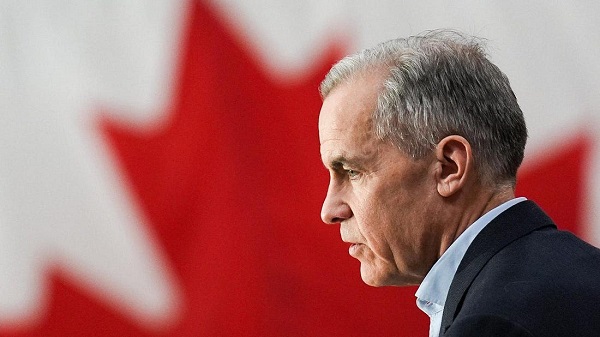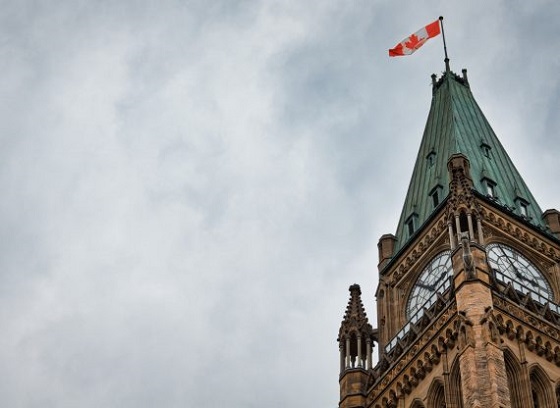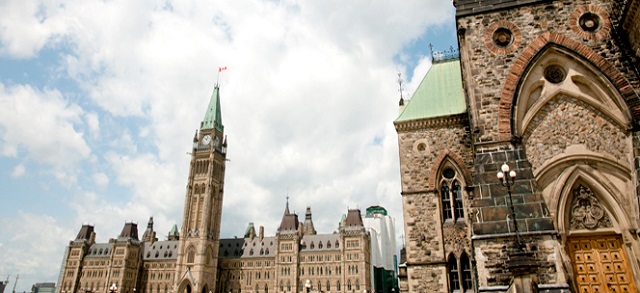Economy
One Solution to Canada’s Housing Crisis: Move. Toronto loses nearly half million people to more affordable locations

From the Frontier Centre for Public Policy
By Wendell Cox
The largest CMA, Toronto, had by far the most significant net internal migration loss at 402,600, Montreal lost 162,700, and Vancouver lost 49,700.
Canadians are fleeing overpriced cities to find more affordable housing. And restrictive urban planning policies are to blame.
Canadians may be solving the housing crisis on their own by moving away from more expensive areas to areas where housing is much more affordable. This trend is highlighted in the latest internal migration data from Statistics Canada.
The data covers 167 areas comprising the entire nation, including Census Metropolitan Areas (CMAs), which have populations from 100,000 to seven million. It also includes the smaller Census Agglomerations (CAs), which have a core population of at least 10,000, as well as areas outside CMAs and CAs in each province and territory, which are referred to as “largely rural areas.”
Long-standing migration trends have been virtually reversed. Larger cities (CMAs) now see the highest loss of net internal migrants, while smaller cities (CAs) are experiencing solid gains. Between 2019 and 2023, Canada’s CMAs lost 273,800 net internal migrants to smaller areas, including CAs and largely rural areas. This contrasts sharply with the previous five-year period (2014 to 2018) when CMAs saw only a 1,000-person loss.
So, where did these people go? A significant portion – 108,100 – moved to CAs, which captured 39 per cent of the CMA losses. This is triple that of the previous five years (2014 through 2018).
However, the most notable shift occurred in largely rural areas, which gained 165,700 net internal migrants, representing 61 per cent of CMA losses. This is a dramatic increase compared to the 33,700 net loss in the previous five years.
Among the 167 areas, the migration data is stunning.
The areas experiencing the greatest net internal migration are outside CMAs and CAs. The largely rural area of Ontario saw the biggest gain, with a net increase of 78,300 people – nearly 40 times the number from the previous five years. Meanwhile, rural Quebec placed second, with a net gain of 76,200 people, more than 10 times the increase in the prior five years. The Calgary CMA ranked third (and first among CMAs) at 42,600, followed by the Ottawa Gatineau CMA (Ontario and Quebec) at 36,700 and the Oshawa CMA at 34,900.
The largest CMA, Toronto, had by far the most significant net internal migration loss at 402,600, Montreal lost 162,700, and Vancouver lost 49,700. Outside these CMAs, nearly all areas posted net gains.
People have also started moving to the Maritimes. The Halifax CMA tripled its previous gain (21,300). In New Brunswick, Moncton nearly quadrupled its gain (7,000). Modest gains were also made in Fredericton and Saint John as well as in Charlottetown in Prince Edward Island.
Meanwhile, housing affordability in Canada’s largest CMAs has become grim. Toronto’s median house price to median household income has doubled in less than two decades. Vancouver’s prices have tripled relative to incomes in five decades. Montreal’s house prices nearly doubled relative to incomes over two decades.
These CMAs (and others) have housing policies typical of the international planning orthodoxy, which seeks to make cities denser. In effect, they have declared war against “urban sprawl,” trying to stop any material expansion of urbanization. These urban containment policies, which include greenbelts, agricultural reserves, urban growth boundaries and compact city strategies, are associated with the worst housing affordability. Land prices are skewed upward throughout the market. Demand continues to increase ahead of incomes, but the supply of low-cost suburban land, so crucial to controlling costs, is frozen.
Regrettably, some areas where people have fled are also subject to urban containment and housing affordability has deteriorated rapidly. Between 2015 and 2022, prices in Ontario CMAs London, Guelph, Brantford and St. Catharines have about doubled. BC’s Fraser Valley and Vancouver Island have seen similar increases. Those moving to these areas are ahead financially, but the rapidly rising house prices are closing opportunities.
There are proposals to restore housing affordability, though none tackle the urban containment policies associated with the price increases. Indeed, we have not found a single metropolitan area where housing affordability has been restored with the market distortions of the intensity that have developed in Toronto, Vancouver and Montreal (not in our Demographia International Housing Affordability report or elsewhere). Such markets have become unsustainable for most new entrant households because they cannot afford to live there.
Housing is not a commodity. Households have varying preferences, from ground-oriented housing (detached and townhomes) to high-rise condos. Indeed, a growing body of literature associates detached housing with higher total fertility rates. According to Statistics Canada, Canadians have favoured lower densities for decades, a trend that continued through the 2021 Census, a trend that continued through the 2021 Census, according to Statistics Canada.
With governments (virtually around the world) failing to maintain stable and affordable housing markets, it’s not surprising people are taking matters into their own hands. Until fundamental reforms can be implemented in the most expensive markets, those seeking a better quality of life will have no choice but to leave.
First published in the Financial Post.
Wendell Cox is a senior fellow at the Frontier Centre for Public Policy and the author of Demographia International Housing Affordability.
Daily Caller
UN Chief Rages Against Dying Of Climate Alarm Light


From the Daily Caller News Foundation
The light of the global climate alarm movement has faded throughout 2025, as even narrative-pushing luminaries like Bill Gates have begun admitting. But that doesn’t mean the bitter clingers to the net-zero by 2050 dogma will go away quietly. No one serves more ably as the poster child of this resistance to reality than U.N. chief Antonio Guterres, who is preparing to host the UN’s annual climate conference, COP30, in Brazil on Nov. 10.
In a speech on Monday, Guterres echoed poet Dylan Thomas’s advice to aging men and women in his famed poem, “Do not go gentle into that good night:”
Do not go gentle into that good night,
Old age should burn and rave at close of day;
Rage, rage against the dying of the light.
Dear Readers:
As a nonprofit, we are dependent on the generosity of our readers.
Please consider making a small donation of any amount here.
Thank you!
Though wise men at their end know dark is right,
Because their words had forked no lightning they
Do not go gentle into that good night.
Seeing that his own words have “forked no lightning,” Guterres raged, raged against the dying of the climate alarm light.
“Governments must arrive at the upcoming COP30 meeting in Brazil with concrete plans to slash their own emissions over the next decade while also delivering climate justice to those on the front lines of a crisis they did little to cause,” Guterres demanded, adding, “Just look at Jamaica.”
Yes, because, as everyone must assuredly know, the Earth has never produced major hurricanes in the past, so it must be the all-powerful climate change bogeyman that produced this major storm at the end of an unusually slow Atlantic hurricane season.
Actually, Guterres’ order to all national governments to arrive in Belem, Brazil outfitted with aspirational plans to meet the net-zero illusion, which everyone knows can and will never be met, helps explain why President Donald Trump will not be sending an official U.S. delegation. Trump has repeatedly made clear – most recently during his September speech before the U.N. General Assembly – that he views the entire climate change agenda as a huge scam. Why waste taxpayer money in pursuit of a fantasy when he’s had so much success pursuing a more productive agenda via direct negotiations with national leaders around the world?
“The Green New Scam would have killed America if President Trump had not been elected to implement his commonsense energy agenda…focused on utilizing the liquid gold under our feet to strengthen our grid stability and drive down costs for American families and businesses,” Taylor Rogers, a White House spokeswoman, said in a statement to the Guardian. “President Trump will not jeopardize our country’s economic and national security to pursue vague climate goals that are killing other countries,” she added.
The Guardian claims that Rogers’s use of the word “scam” refers to the Green New Deal policies pursued by Joe Biden. But that’s only part of it: The President views the entire net-zero project as a global scam designed to support a variety of wealth redistribution schemes and give momentum to the increasingly authoritarian forms of government we currently see cracking down in formerly free democracies like the U.K., Canada, Germany, France, Australia and other western developed nations.
Trump’s focused efforts on reversing vast swaths of Biden’s destructive agenda is undoing 16 years of command-and-control regulatory schemes implemented by the federal government. The resulting elimination of Inflation Reduction Act subsidies is already slowing the growth of the electric vehicles industry and impacting the rise of wind and solar generation as well.
But the impacts are international, too, as developing nations across the world shift direction to be able to do business with the world’s most powerful economy and developed nations in Europe and elsewhere grudgingly strive to remain competitive. Gates provided a clear wake-up call highlighting this global trend with his sudden departure from climate alarmist orthodoxy and its dogmatic narratives with his shift in rhetoric and planned investments laid out in last week’s long blog post.
Guterres, as the titular leader of the climate movement’s center of globalist messaging, sees his perch under assault and responded with a rhetorical effort to reassert his authority. We can expect the secretary general to keep raging as his influence wanes and he is replaced by someone whose own words might fork some lightning.
David Blackmon is an energy writer and consultant based in Texas. He spent 40 years in the oil and gas business, where he specialized in public policy and communications.
Business
The Liberal budget is a massive FAILURE: Former Liberal Cabinet Member Dan McTeague

Prime Minister Mark Carney tabled his government’s long-overdue budget yesterday and took the same approach as his predecessor – spend, spend, spend.
Canada’s deficit is now a staggering $78 BILLION. To make matters worse, Carney doubled down on the industrial carbon tax.
Dan McTeague explains in his latest video.
-

 Alberta2 days ago
Alberta2 days agoAlberta government’s plan will improve access to MRIs and CT scans
-

 Business2 days ago
Business2 days agoCarney government’s first budget should signal end to crippling ‘climate’ policies
-

 Economy2 days ago
Economy2 days agoWelcome to the Energy Humanist Club! Bill Gates breaks the moral monopoly against fossil fuels
-

 Business2 days ago
Business2 days agoFederal budget: Carney government posts largest deficit in Canadian history outside pandemic
-

 Business2 days ago
Business2 days agoBudget 2025 continues to balloon spending and debt
-

 Business1 day ago
Business1 day agoCapital Flight Signals No Confidence In Carney’s Agenda
-

 Business2 days ago
Business2 days agoNo Jobs Clause: Liberals Under Fire Over Stellantis Deal in Fiery Committee Showdown
-

 Agriculture2 days ago
Agriculture2 days agoDanish Cows Collapsing Under Mandatory Methane-Reducing Additive










